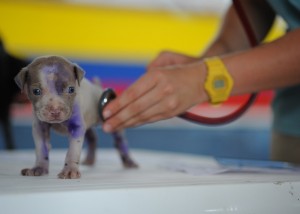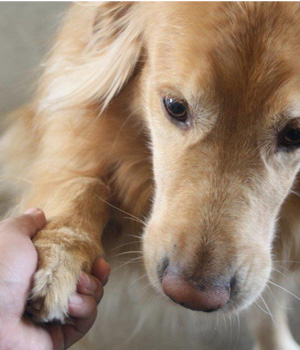In addition to making sure the canine population doesn’t increase because of your furry friend, spaying your female dog offers many other benefits. Female dogs who are spayed tend to be less aggressive and they won’t develop Pyometra, a uterus infection that can be fatal. Ideally, your female doggie companion should be spayed when she’s a puppy, somewhere between 6 and 8 months of age, before she goes into heat for the first time. If you have a little girl pup who’s ready for her spay appointment, appropriate care should be taken when it comes to how to prepare your puppy for spaying.
Familiarize Yourself with Your Pre-Surgery Checklist
Your vet, or the facility performing your puppy’s spay, should give you a pre-surgery checklist to follow, which will include mandatory and recommended tasks to attend to. Become familiar with the checklist at least a week before your puppy’s spay appointment. To properly prepare your puppy for spaying, your vet will likely require you to make sure your doggie is in good health (which probably necessitates a physical exam). Blood tests are sometimes suggested, and a thorough evaluation of pre-existing conditions or medications your puppy is taking is good idea.
Prepare Your Puppy for Spaying Day
When you know your pup is in good health and will likely get through the surgery okay, it’s time to get ready for spay day. Many vets recommend that puppies don’t eat anything the morning of their spay, but this could mean you’ll need to withhold food beginning at midnight that day or at around 6 a.m. Your vet or spay facility should give you their requirements. It is, however, okay to give your pup a bit of water and some ice cubes to lick. Ultimately, it’s best if the bladder and bowels are empty for the spaying procedure.
Emotional Support for Your Puppy
Many human companions find that spay day goes well when they take the entire day off of work. That way, from the earliest hours of the morning, focus and attention can be placed on the puppy and readying her for spaying. And, after the procedure, it’s possible to give all the time and love your puppy needs to recuperate and get re-acquainted with their normal life. For at least a day, puppies have to deal with not-so-fun things like healing incisions and maybe even irritating head cones. Love is the keyword in emotionally supporting your puppy throughout a spaying procedure and afterward. Some puppies can sense the change that’s coming and often they’re confused after their spay procedure. You can help ease your pup’s little mind by offering loving cuddles, pets, massages, and words the entire time.
Familiarize Your Puppy with a Carrier or Crate
Your vet might require you to bring your puppy to her spay appointment in a carrier or crate. Even if the vet doesn’t demand this, it’s a good idea. Puppies are often safer during travel, and in unfamiliar places, when they’re comfortably tucked away into a temporary home. To prepare your puppy for spaying, take a week or so to familiarize her with a cozy carrier or crate that’s size appropriate.
When my clients ask me how to prepare your puppy for spaying, I stress that are two parts of the process to focus on: physical preparation and emotional support. These parts must go hand in hand, to offer the best outcome for a nervous puppy or any puppy. Typically, getting a puppy to remain calm through the whole spay procedure is the biggest challenge. To accomplish this, you don’t need to take your pup to rigorous dog obedience training classes first. You can simply call me and I will advise you on how to lovingly ready your little dog for a big milestone in her life. Some of my clients think of me as their private dog trainer, but I consider myself a private dog relationship coach. I will help you help your dog in a way that works out best for everyone.




